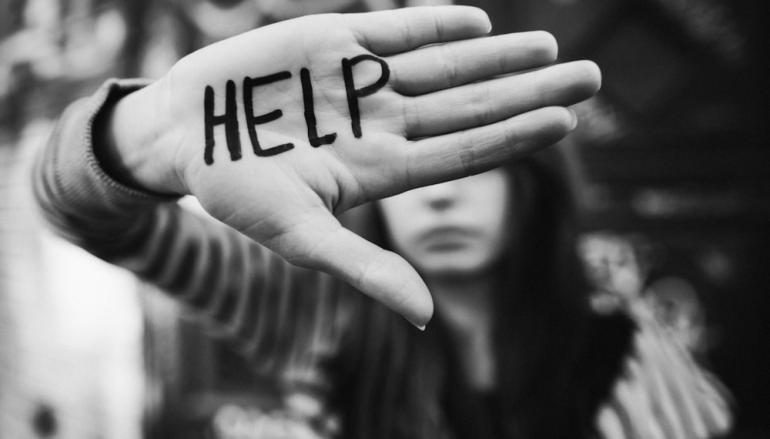
Self-Harm. Substance Abuse. Eating Disorders.
By Hannah Favorite (Editor-in-Chief of Happenstance) and Bailey Peacock (Marketing Manager)
Self-Harm
Self-mutilation statistics illustrate the reality of this problem and its present danger, especially in the lives of teenagers.
When one thinks of self-harm the first things to pop into their mind consist of cutting and suicide. Within recent years it has become more visible in society how often teenagers bring physical pain to themselves. There are many reasons as to why a person makes the decision to hurt themselves, such as coping with internal emotions and/or to relieve emotional numbness. When a person experiences trauma of any sort, the stress and anxiety may lead them to self-harm. There are some basic signs in noticing whether someone is self-harming, including scars, excessive rubbing of a certain area, wearing long sleeves and pants, especially in hot weather, struggling in interpersonal relationships, displays of emotional instability, impulsive or unpredictable behavior, or hopelessness.
“I wanted to get my mind off my problems” is what 55% of self-injurers said, and 45% said “It helped me to release tension or stress and relax.” Adolescents are stressed out of their minds, and some find hurting themselves to be the only escape. There are many factors that go into self-harm. Self-harm may start with the end of a relationship, by curiosity taking hold of a young teenagers mind, or from extensive problems in the home. The majority of those who self-harm do not harm themselves for attention. Sometimes it is a shout for help, that something is seriously wrong. If you are worried about a loved one that you believe might be harming themselves, seek professional help. Cutting and other forms of self-harm can escalate quickly. Therapy is an effective way of getting help for your loved ones. Ask a therapist beforehand if they have any experience with self-harmers, and if they do not, ask for a recommendation — that way, you know your loved one is getting the best care possible.
Students are finding there to be no escape from the struggles they face in day-to-day life, causing many teenagers to see suicide as their only answer — but it’s not. Society has publicized suicide to the point where it has become normal. The age of self-harm is dropping; Children see someone harming themselves on TV, become curious, and repeat the actions they see on the screen. And Nease students are exposed to much more than the average child; As teenagers, there is underage drinking and drug use that both go hand in hand with depression, which can lead to self-harm. The overwhelming majority of students at any high school campus, including Nease, will have known or know someone who has harmed themselves. Mrs. Gibbs, a guidance counselor at Nease, said said that if you are concerned about a loved one, the first step is to tell an adult, a trusted teacher, a guidance counselor, or a parent. Getting professional help is the best thing for the well-being of your loved one. Doctors with with experience, a degree, or who specialize in self–harm are great resources of help.
Substance Abuse
As teenagers enter high school, and even college, they become exposed to peer pressure more than ever before. As students go through their years of learning, they start trying things for the first time. For some people, it is just about having the experience of just trying it, but for others, it becomes a struggling addiction.
When trying substances for the first time, students only think of the “positive” effects they are about to experience, but often forget the negative consequences. Alcohol, marijuana, and Adderall are commonly misused substances by teenagers. Here are the negative consequences:
Alcohol
Short term:
- Drowsiness
- Impaired judgment (10% drove under the influence and 22% rode with someone under the influence)
- Decreased perception and coordination
- Distorted vision and hearing
- Blackouts (memory lapses)
Long term:
- Nerve damage
- Liver disease
- Unintentional injuries (car accidents)
- Brain damage
- Gastritis (inflammation of stomach wall)
- Cancer of mouth and throat
- Ulcers
Marijuana
Short term:
- Panic
- Hallucinations
- Anxiety (paranoia)
- Short term memory loss
- Increased heart rate
- Loss sense of personal identity
- Problems with coordination
- Psychosis
Long term:
- Decline in IQ points (up to 8 points if prolonged use started in adolescent age)
- Poor school performance/higher drop out risk
- Addiction 17%
- Breathing problems
Adderall
Short term:
- Digestive problems
- Difficulty sleeping
- Anxiety
- Reduced appetite
Long term:
- Seizures
- Changes in vision
- Chest pain
- Difficult speech
- Weakness/numbness in arms and legs
- Blistering and peeling skin
These substances have been linked to mental health problems such as depression, anxiety, and suicidal thoughts or actions among teenagers.
Don and Lisa from Alcoholics Anonymous, a recovery program for alcoholics in remission, say they have a fair amount of people that come to them in their early twenties. The majority of people that have a drinking problem say it all started when they were in high school or college. Don said, “With regards to advice for high school kids, my best answer would be not to treat alcohol too lightly … there is no cure for alcoholism, you can only put it into remission, for you see there are no graduates, just perpetual students of life.” Once becoming an alcoholic, there is no cure, but after acknowledging the problem, you can go to a recovery center and begin the 12 Steps and work towards remission.
Sources: drugabuse.com, americanaddictioncenters.org
Eating Disorders
Bulimia, anorexia, and binge-eating disorder are all physically and emotionally devastating.
Currently 30 million people in the United States are suffering from some sort of eating disorder. A whopping 10% of these people are currently receiving treatment. These numbers demonstrate how many people are effected by eating disorders and do not seek or receive the help they need. There are many signs that one of your loved ones has such a disease, including extreme weight loss or gain, an increase in exercise, an interest in cooking, frequent trips to the restroom after eating, refusal to eat in anyone’s presence, anxiety or depression, or a lack of energy. All of these are important signs, and if you catch one in a friend or family member, make sure they get the help they need.
A person’s environment is key to figuring out if something is wrong. Typically if a person has undergone a tragedy or a life-altering event, he/she may stop eating or start eating excessively, both of which are not healthy. But this is not always the case, and many people blame social media for such high numbers related to eating disorders. The image of the “ideal body” being skinny may lead to many teenagers to starve themselves. Both men and women are subjected to the criticism and feelings of not being good enough.
These mental health challenges leave people feeling alone, like no one understands or could possibly help. Eating disorders within the teenage years are becoming more and more common in the United States and on Nease’s very own campus. Knowing the severity of teenage eating disorders is key to helping those who are suffering. There are key behavioral signs that every student, parent, and facility member at Nease should be aware of. Behavioral signs include but are not limited to, irritability, fatigue, and sadness. But there is always hope; half of all teenagers struggling with anorexia, bulimia, or any sort of eating disorder will have a full recovery.
NEDA, or the National Eating Disorders Association, is dedicated to supporting not just individuals, but families that are affected by eating disorders. They serve as a catalyst for prevention, access to care, and various cures all while being the largest nonprofit dedicated to the issue. Their team of medical professionals, influential people, and parents provides guidance and personal expertise to further the cause. Their website is a great place to get all the information you may need to help your loved one who may be suffering from an eating disorder.
Cover photo credit: Al Jumuah Magazine

